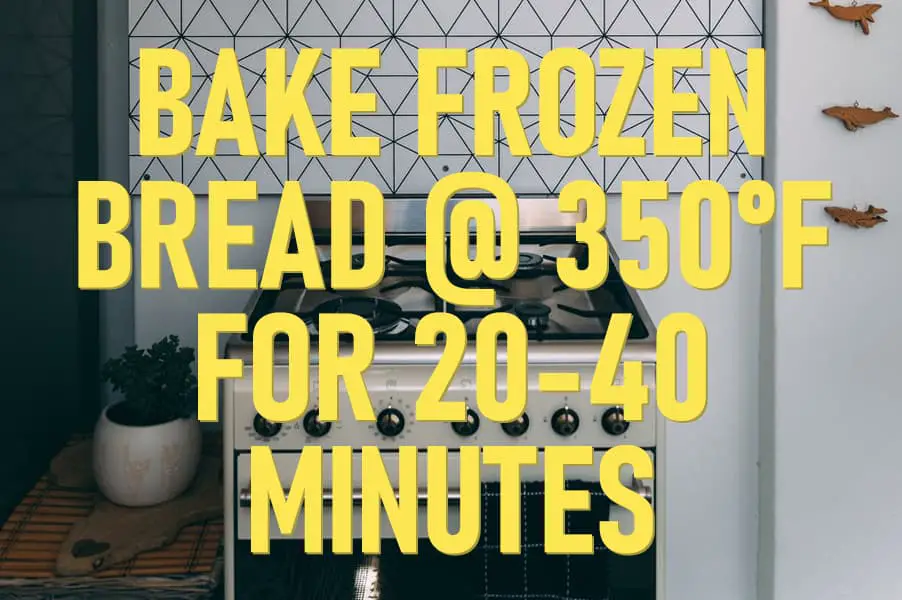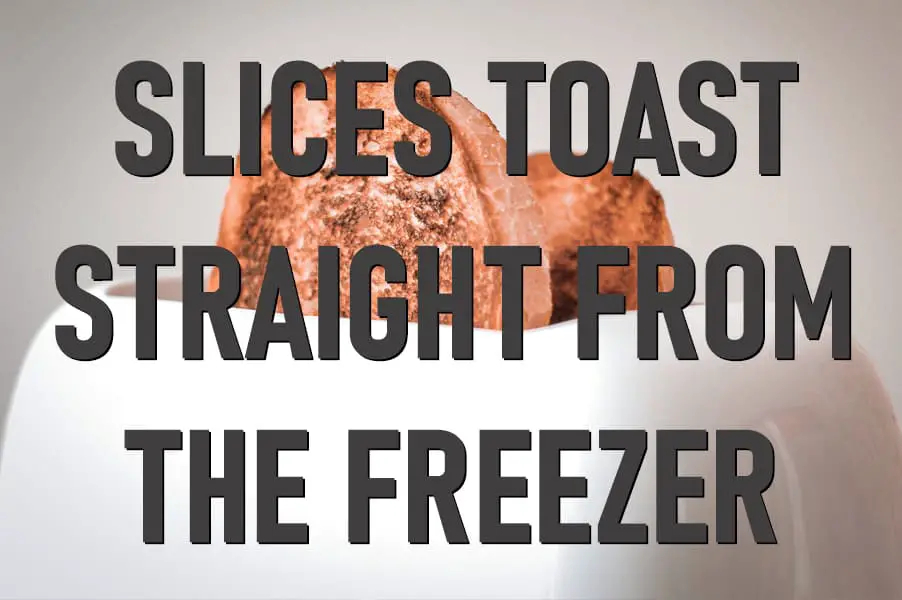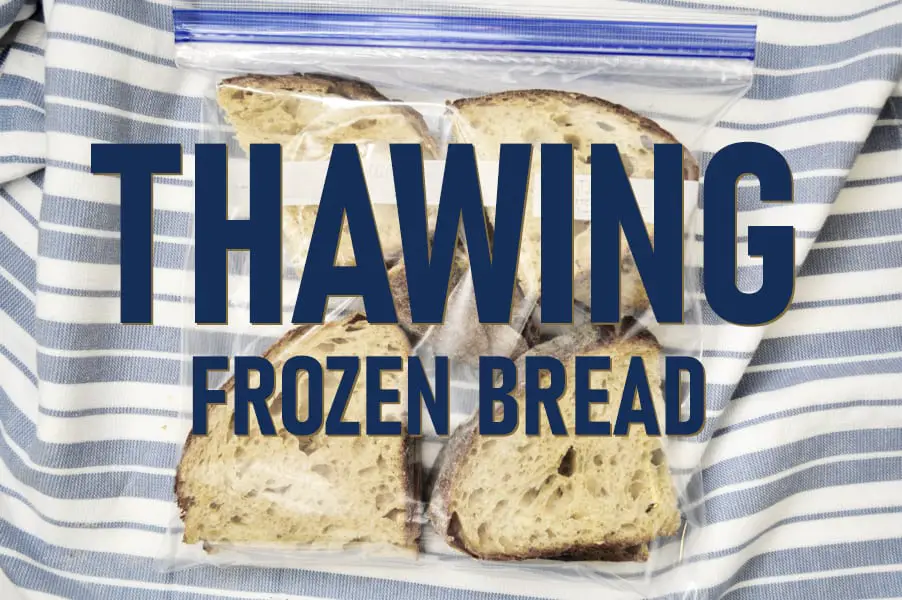So you’ve decided to freeze some bread and now you want to know the best way to defrost it. The good news is frozen bread can be revived, and to be honest, if done right, it can be pretty close to fresh baked bread.
How do you defrost bread, the right way, you ask?
A whole loaf of frozen bread can be revived to nearly fresh baked condition in a 350° F oven. Depending on the loaf size it will take 20-40 minutes. For rolls, it takes just 10-15 minutes. For sliced bread, using a toaster will revive frozen bread to perfection.
Let’s take a closer look at each of those options, starting with a whole loaf of bread.
Defrosting a Whole Loaf of Bread

I know it seems pretty hard to believe that frozen bread can turn out almost as good as fresh-baked bread. I was doubtful in the beginning as well. But if you follow the steps below, you’re sure to experience the same result.
I’ll throw out the caveat, that this presumes you stored your bread in your freezer in a way that maximizes freshness. We have an article on that here, if you’re not sure about that.
So, assuming you did, let’s tackle those steps.
Step 1: Preheat your oven to 350° F.
Step 2: Remove your bread from the freezer and plastic bag.
Step 3: Place your bread directly on your center rack.
Step 4: Bake bread for 20-40 minutes (smaller loaves will be on the low end while large loaves will be on the higher end).
Step 5: Remove from oven and let cool for a couple of minutes before slicing.
You’re looking for a crispy crust that has flex and a loaf that will give if squeezed. If your loaf of bread is a soft sandwich loaf, and you’re wanting to keep a soft crust, try brushing melted butter on the crust about 10 minutes into the bake.
*If you go the butter route, don’t put your bread directly on the rack. Use a sheet pan instead. Because obviously you don’t want burned butter all over the bottom of your oven. 🙂
Defrosting Rolls
With rolls, you’re certainly going to need to bake for less time than a large loaf of bread. And you’ll likely want to revive them a bit more with some brushed butter on top.
Once again, follow these steps and you’re sure to be just fine.
Step 1: Preheat oven to 350° F.
Step 2: Remove rolls from the freezer and plastic bag.
Step 3: Place rolls in a baking dish and brush melted butter on top.
Step 4: Bake for 10-15 minutes.
Step 5: Remove rolls from oven and cool for a couple of minutes before serving.
A nice soft roll is what you’re looking for here. If you notice your butter tends to burn, just wait to brush butter on your rolls until you’re halfway through the bake.
Rolls can actually turn out well without baking too. Check out the last section where we talk about defrosting without baking.
Defrosting Sliced Bread

Defrosting sliced bread is by far the easiest process of the bunch. Our go-to methods are:
- Toaster Method:
For soft bread, place frozen slices directly in a toaster, stopping the toasting process earlier than a full cycle. If it’s not completely thawed, pop it in again for a few seconds longer.
If toast is desired, it’s even easier, just let it toast for a full cycle. If it doesn’t toast in one go, let it go twice. - No Toaster Method:
Simply placing frozen bread in a pan at medium-high heat will do the trick for both soft bread or toasted bread. The pan takes much longer than the toaster for toasting but works equally well. Takes just a few minutes on either side for soft bread and 3-4 minutes per side for toasted bread.
For something a little more like what you’d find at a diner, melt some butter in the pan first. This is one of my favorite ways to prepare sourdough.
What About Bread You Don’t Want to Bake?
There are several types of bread that turn out well without baking them to defrost them. A few of those types are:
Bagels
Hotdog Buns
Hamburger Buns
Soft Sandwich Loaves
Flat Bread
The trick here is leaving them in the bag the entire time they are defrosting and letting them thaw completely, sitting at room temperature (not the fridge).
The plastic bag (which doesn’t typically help in most circumstances) will help hold in moisture during defrosting, which turns out great bread.
Something to keep in mind is the humidity of your environment. If you live in an extremely wet environment, defrosting in a plastic bag might not be best for you.
One tip if you find your moisture levels are so high that you end up with soggy bread, is to place a folded paper towel in your bag with your bread. Put it in during freezing and keep it in while defrosting.
In many situations, that will resolve the moisture issues.

